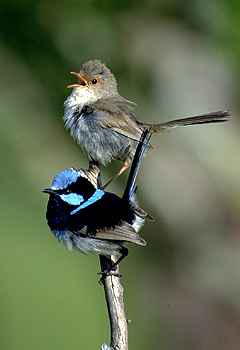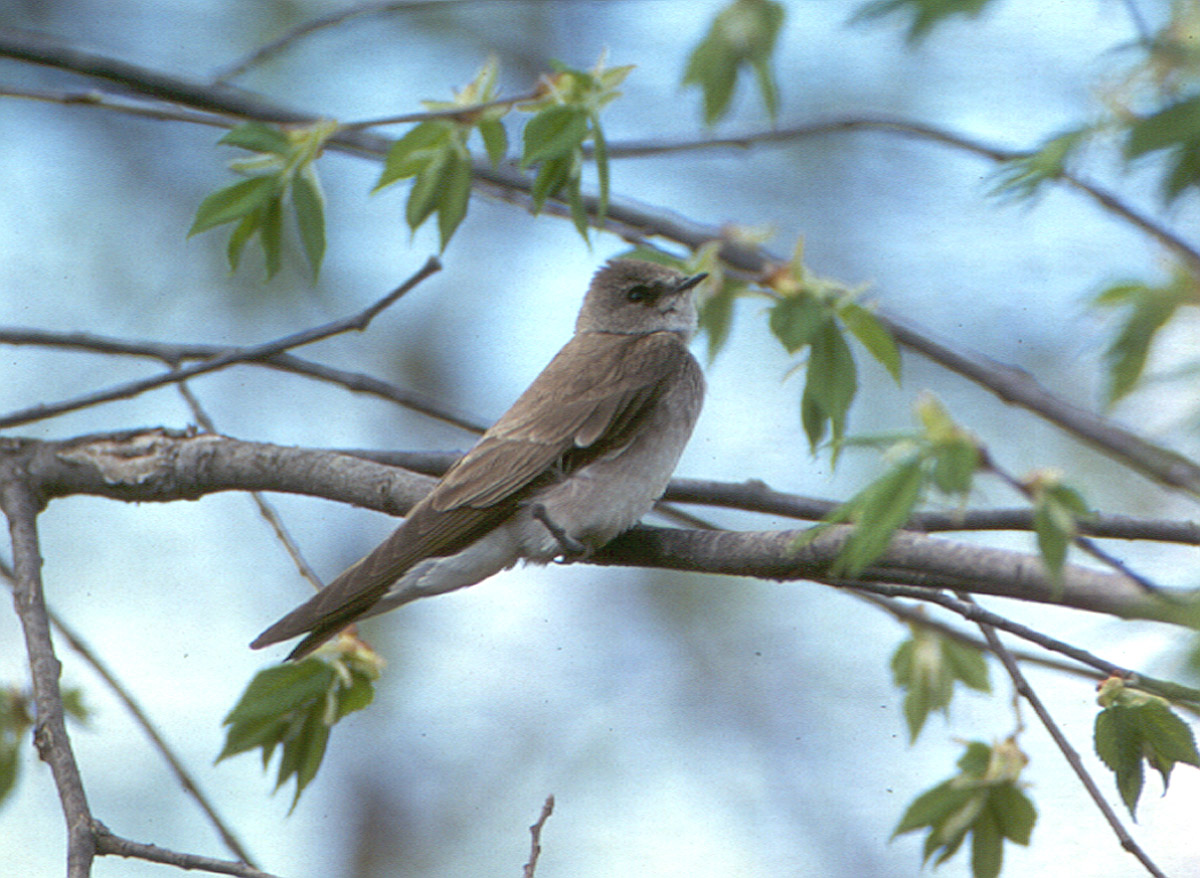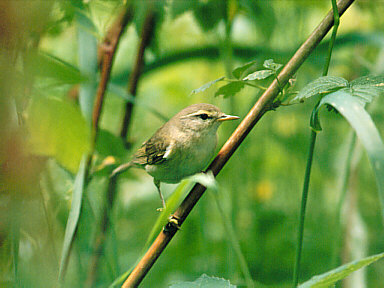Willow Warbler Phylloscopus trochilus
This abundant summer visitor throughout Europe must be separated from the Chiffchaff (Phylloscopus collybita). Field identification of these two common species, which may at first appear very similar is mainly based on their respective songs, but several other features are quite useful.
The Willow Warbler is more attenuated, sleeker and long-winged, compared with the rounder-headed, rounder-bodied Chiffchaff; Willow is longer-winged and pointed primary projection are about three quarters of , or equal to lenght of tertials. Willow has paler, orangy legs and often has obvious orange at base of bill, while Chiffchaff has dark legs and a darker-looking bill.
Plumage differences are subtil and variable. Willow usually has a "sharper" facial expression, with stronger eye-stripe and longer, more definite supercilium, as shown here. Willow also tends to have better-marked green panel on tertial and secondaries, and much yellow underparts in adults and first-winters, constrasting with the more uniform and rather buff pattern of the Chiffchaff.
The Wood Warbler (Phylloscopus sibilatrix) is very bright green above, with obvious narrow green edgings to black centred remiges. Throat and supercilium are bright primrose-yellow, with yellow ear-coverts. Its song is highly evocative as well.
The Bonelli's Warbler (Phylloscopus bonelli) looks like the Willow but is usually more round-headed and distinctly pale-greyish, with pale head and upperparts. The rump is pale yellow, and legs are grey-brown.
The Greenish Warbler (Phylloscopus trochiloides) is smaller than the Willow, with a short tail and a short dark bill. These birds show a narrow but noticeable clear-cut wingbar.
Listen to its song here: 
Bird photographed by Juhani Kyyro

Gallery overview
Quiz Statistics
Quiz results
Rules
Hall of Fame
More links !








